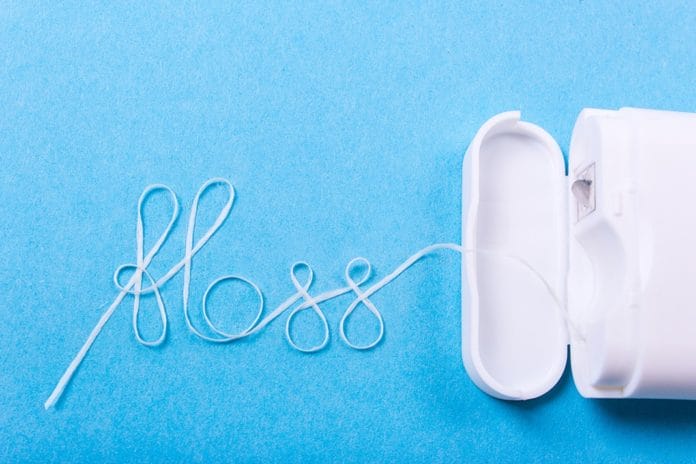The Journal of Dental Hygiene recently published a study titled “Efficacy, Safety and Patient Preference of Knotted Floss Technique in Type I Gingival Embrasures” in their February edition. The research examined the knotted floss technique compared to conventional floss technique in patients with type I gingival embrasures.
About Gingival Embrasures
A gingival embrasure is a medical term used to describe patients with an open space along their gum line that is not filled with gingiva. There are three known types of gingival embrasures. The first type occurs when the papilla fills the interproximal space, and the teeth are slightly touching. The second type of gingival embrasure occurs when the papilla starts to recede slightly, and there is more space between the teeth. Meanwhile, the third type of dental embrasure occurs when there is a large space in between teeth due to the complete recession or loss of papilla in that section.
Patients with gingival embrasures may find that it’s easy for food and bacteria to accumulate in between their teeth due to the open space. If bacteria accumulates over time, it can ultimately harm the appearance of their smile and increase their chances of developing periodontal disease.
A study conducted in the late 90s revealed that patients were viewed as less attractive to orthodontists when they had a gingival embrasure that was 2mm versus others with normal gingival embrasure. Meanwhile, people with open gingival embrasures bigger than 3 mm were considered less attractive overall by both dental professionals and others outside the dental field.
Dental professionals must conduct a thorough examination and understand the patient’s etiology before they decide to make a tailored treatment plan. There are different treatment options for patients with gingival embrasures. Usually, the treatment methods include a combination of orthodontic, periodontal, and restorative surgery. It’s also important to note that gingival embrasures can evolve over a period of time and the space may open again after it’s been fixed by a professional.
About the Study
Aaron F. Gomes, MDS led the research published in the Journal of Dental Hygiene. Gomes is a professor at the Uttaranchal Dental and Medical Research Institute in Uttarakhand, India. He is also the chair of the Department of Periodontology and Oral Implantology. Gomes was also joined by Gaurav Chahal, MDS, who lectures in the Department of Periodontology and Oral Implantology. Besides Gomes and Chahal, Amit Rekhi, MDS a senior lecturer in the Department of Public Health Dentistry and S. Menu, a professor and chair of the Department of Oral Medicine and Radiology contributed to the study.
The main purpose of the study was to determine if it was safe for patients with Type I gingival embrasures to use the knotted floss technique as part of their daily oral hygiene routine. The scientists wanted to see if knotted floss was safe and efficient enough to remove plaque, improve bleeding gums, and reduce gingival inflammation. They also were curious to see if patients would prefer that method over the others.
Gomes gathered 30 adult participants with Type I gingival embrasure to participate in the crossover study. None of them floss their teeth regularly. The scientists randomly assigned them into two groups. One group used the knotted floss technique while the other used conventional floss over 12 weeks. Next, the researchers evaluated and scored the patient’s test-sites at the baseline level and every two weeks afterward using a gingival trauma scoring method, Rustogi Modification of Navy Plaque Index, Modified Gingival Index, and Modified Papillary Bleeding Index.
Based on their findings, Gomes asserts that knotted flossing is a safe and effective way for patients with Type I gingival embrasure to remove plaque biofilm and reduce bleeding gums. When compared to conventional floss, their research also revealed that knotted floss could remove more plaque than conventional floss when used in conjunction with tooth-brushing. The majority of the patients (71%) also preferred the knotted floss and said they planned to use it in the future.











